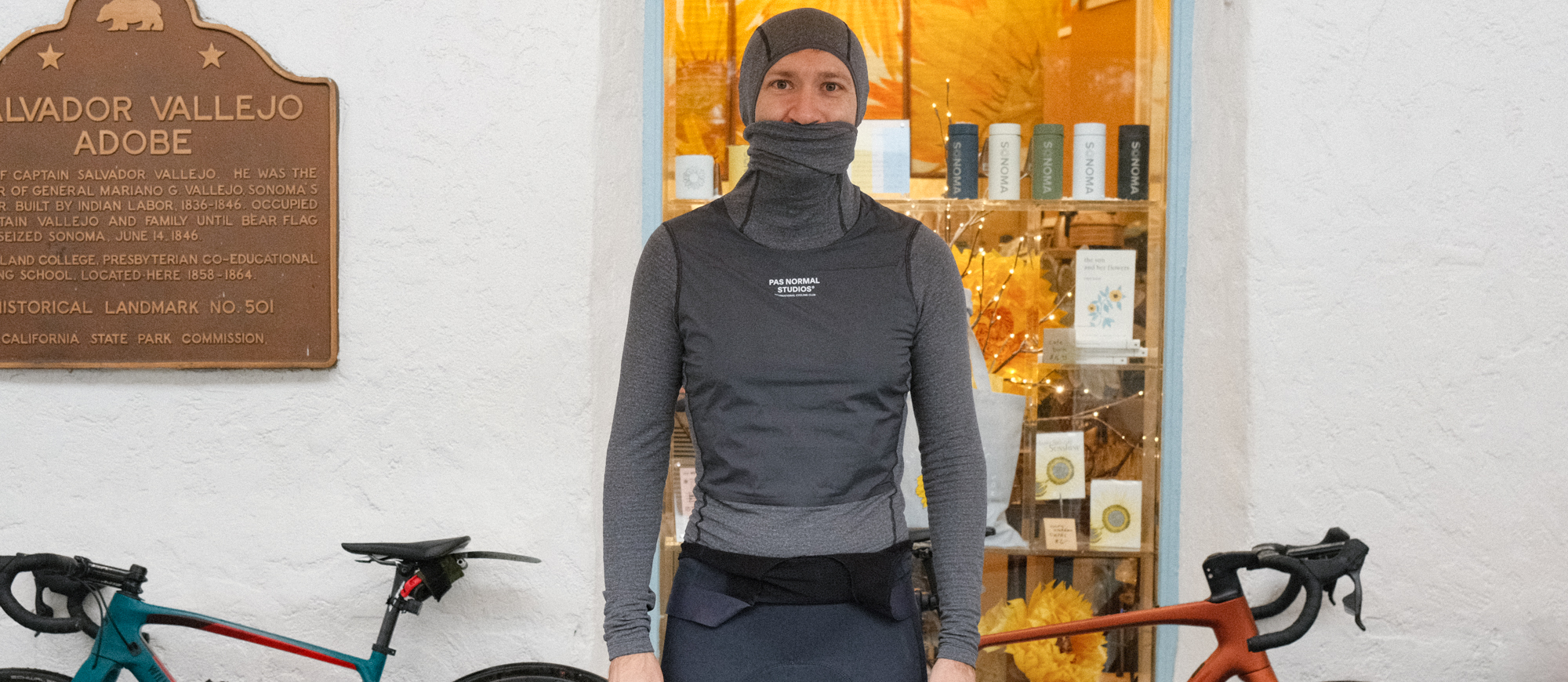Cyclingnews Verdict
The PAS Normal Thermal Long Sleeve Windproof Base Layer is a well-designed piece that already would have gotten my praise. The openings for helmet straps integrated into the hood though, that's genius. Undercutting both Rapha and Assos a bit on price is merely a bonus.
Pros
- +
Hood is sleek and form fitting
- +
Helmet strap cuts in the neck portion
- +
All the benefits of merino wool
- +
Price undercuts alternatives
Cons
- -
Windstop front reduces breathability
You can trust Cyclingnews
Rain or shine, warm or cold, a base layer is what every solid layering system should start with. Still, while it's important in the summer, it's really the winter when the right base layer is vitally important. Choose right and you can extend summer gear deeper into the cold months or add another layer when you've got every piece of clothing you own layered on top. Whatever your need, there are a lot of options. For that reason, we've got a solid lineup across a wide range of uses in our best cycling base layers buyers guide.
One, less common, class of base layer is the integrated deep winter design. The idea is to integrate needs that often require multiple pieces of gear and it's a style that I tend to search out for my coldest winter rides. PAS Normal has a new entry into this category called the Thermal Long Sleeve Windproof base layer and I had a chance to put it to the test. Not only that but as luck would have it, I had my hands on this piece during an atmospheric river. With winds high and rain dumping down, I settled in for some testing. Keep reading to see what I liked, or didn't like, about this new PAS Normal base layer.
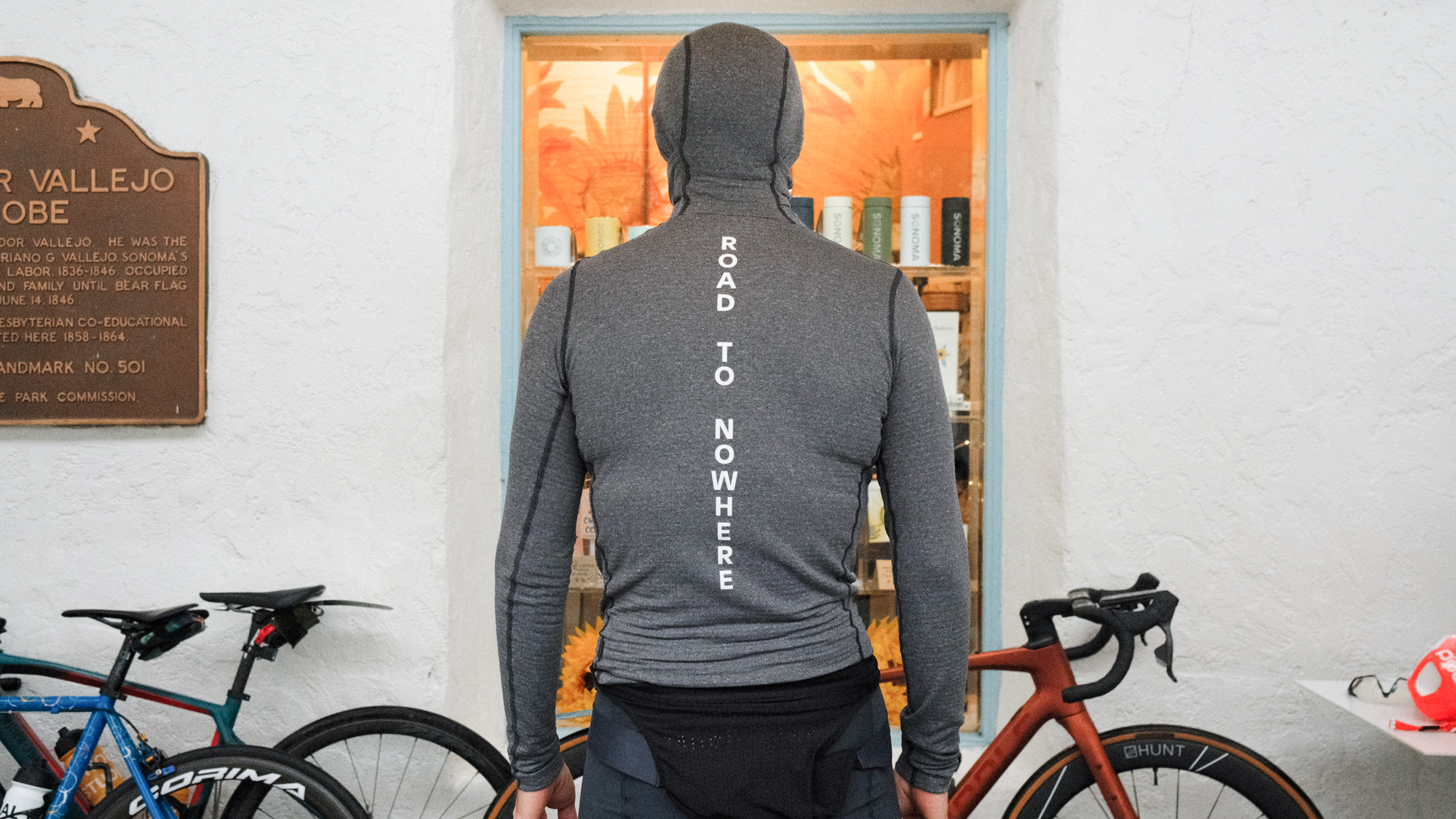
Design and aesthetics
Realistically, the PAS Normal Thermal Long Sleeve Windproof Base Layer is a simple design. The colours offered are Navy (seen here, but it looks a little grey) and Olive and the patterning isn't complex. There's a front panel and a rear panel that meet at the shoulders plus there's a single panel for each side. The sleeves are both a single piece of fabric as well. The rear has a bit of a drop tail and there's also vertical text that reads "Road to Nowhere" from top to bottom. All the seams use flatlock stitching and the hems are simply folded over before receiving a seam.
The fabric is the first detail where things start to get a little more complicated. PAS Normal uses a Polartec fabric called Power Wool. The skin facing side has rows of lofted merino wool. It has a certain natural quality to the feel but it's also soft and warm. Then, for the outer, Polartec uses a synthetic material. This "bi-component" design lends the durability and shape retention of the synthetic but keeps it feeling like a natural merino wool fabric.
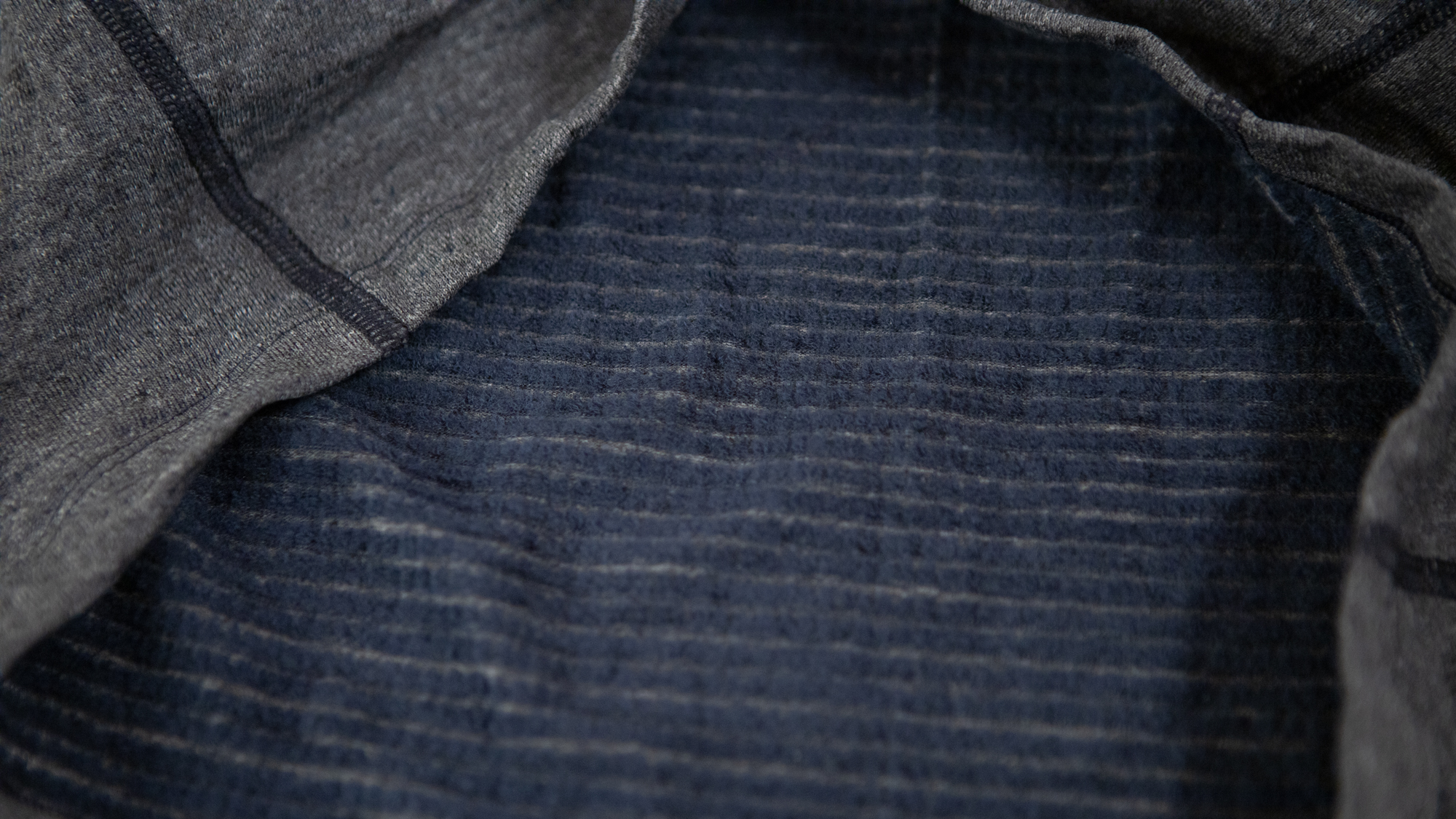
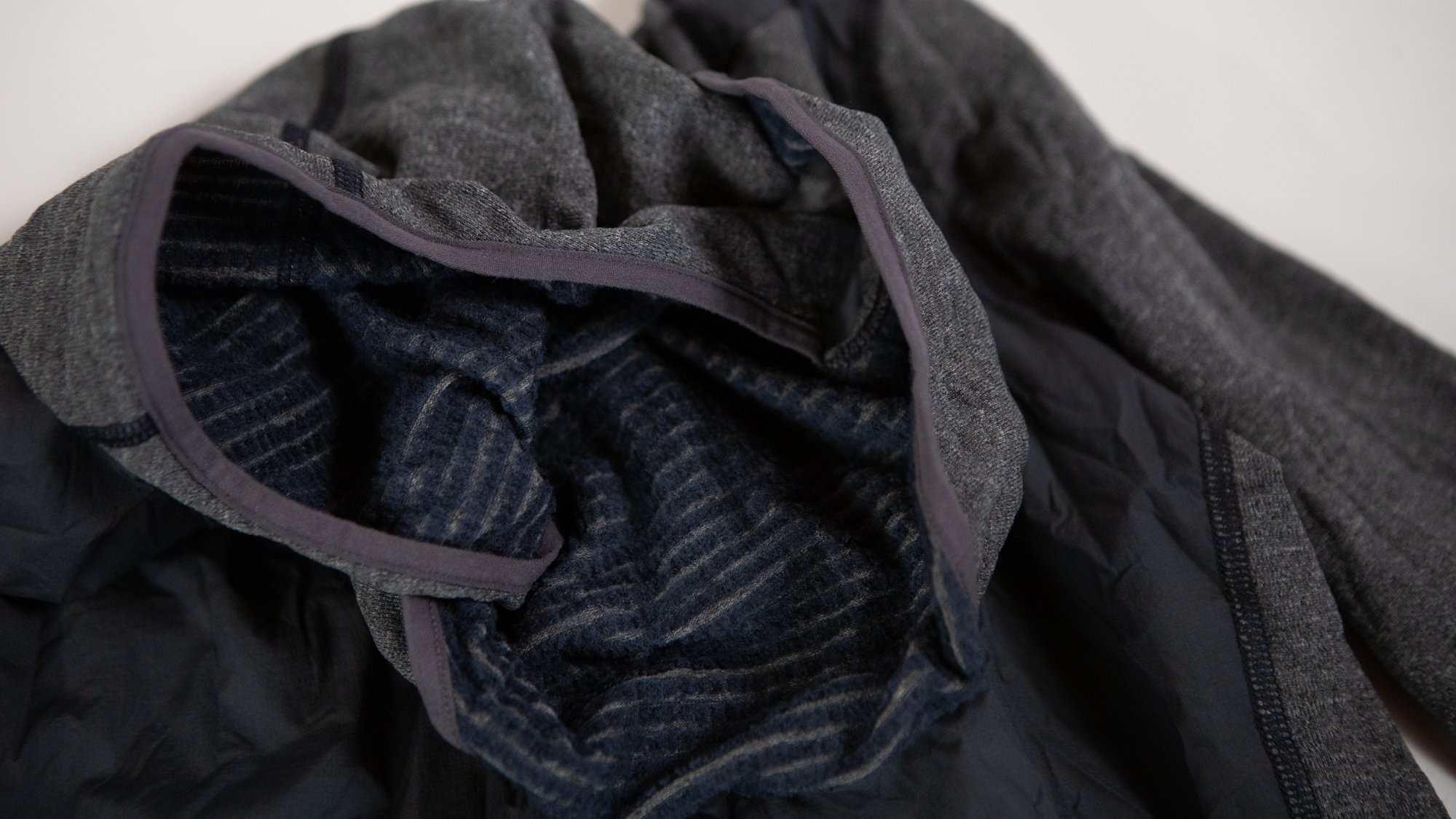
Continuing past the fabric, the other added details are a couple of details to help bolster warmth. Threse additions start with the integrated hood. Like the rest of the baselayer, it’s Power Wool, meaning it's fitted and stretchy and there is an elastic edge to further help the hood to stay put. Like most hoods of this style, there is a central panel and two side panels over the top of the head. The women's version does have a pass through for long hair. What’s different though is that the front panel though uses a "T" shape and it's cut very high. By leaving a small section at each side of the "T" unattached, PAS Normal has created a channel for helmet straps. At the front, the cut is plenty high enough to pull up over the nose when needed and there's another elastic edge to help keep it in place.
The other detail PAS Normal includes to add warmth is a windstop front panel. The underlying design hasn’t changed but the front upper three quarters has an extra layer over the top. If the extra material wasn’t there, you’d never know it was supposed to be. The synthetic material stretches from shoulder to shoulder following the curve of the neck and shares the seams at the edges. The only added seam is along the bottom of the windstop where it stops short of the bottom of the front panel.
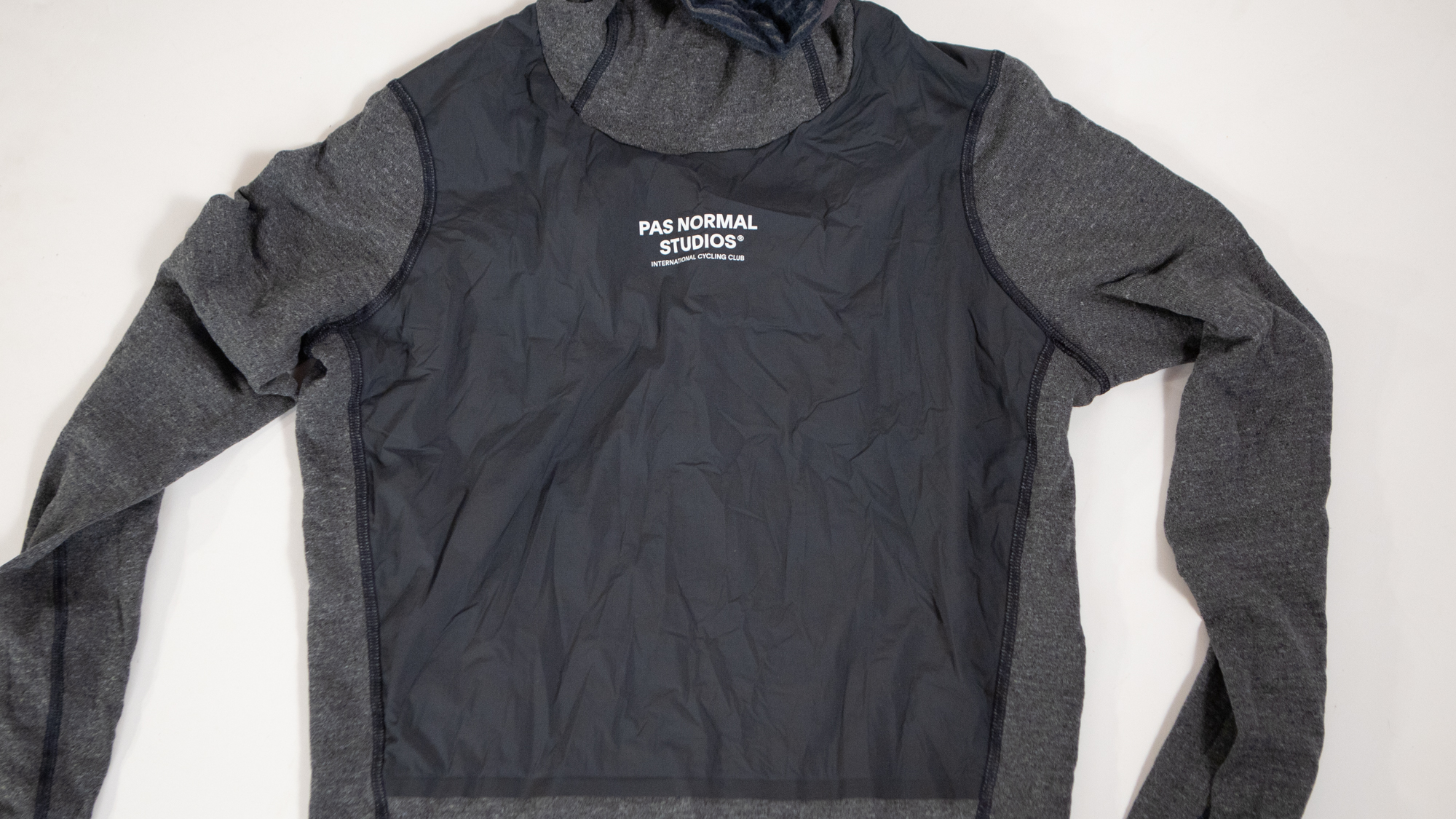
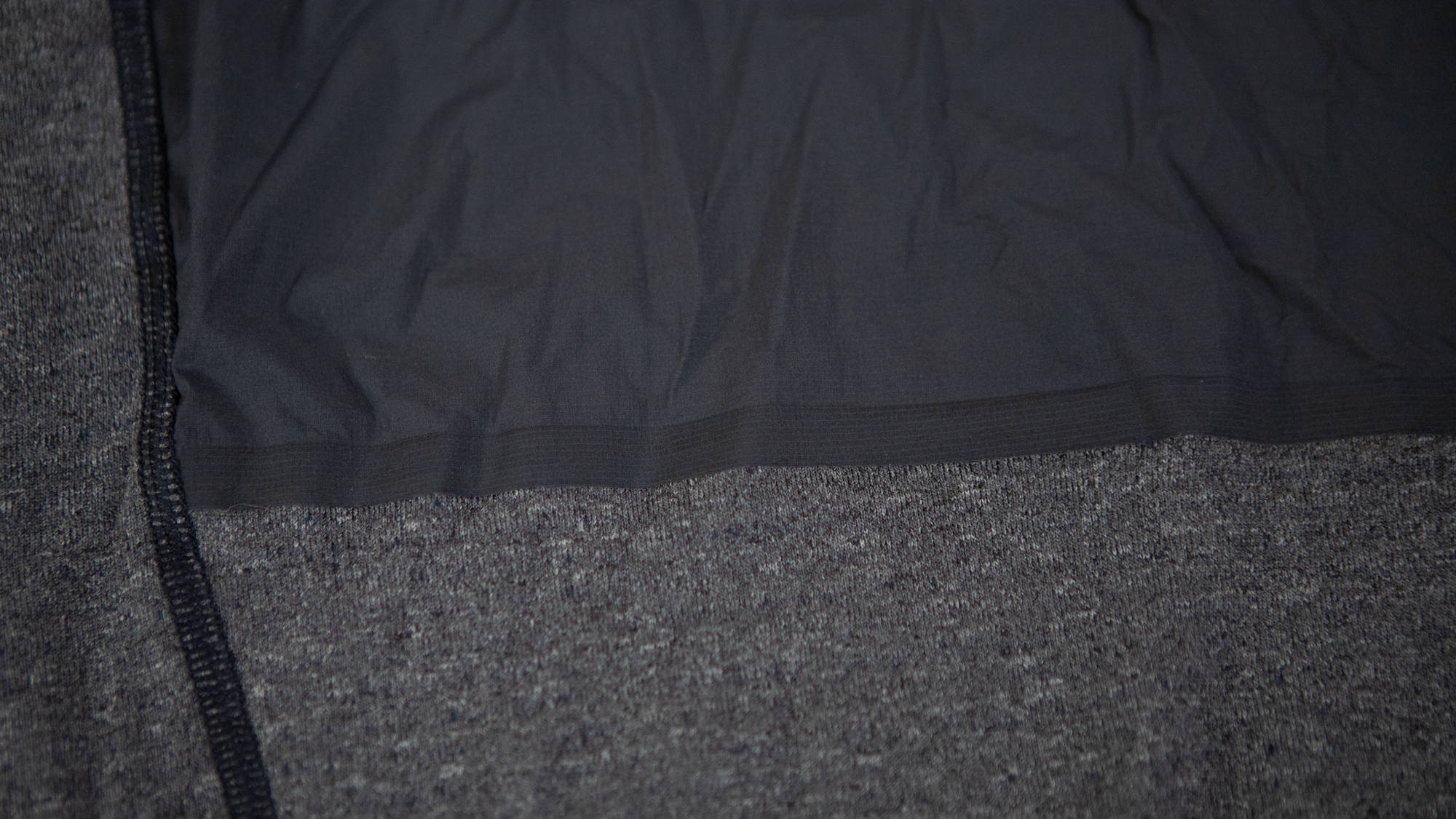

Performance
I spent time testing this piece in a Northern California in the space between San Francisco and Sonoma. It's an area that doesn't see a lot of truly cold weather and, especially as of late, almost no rain. I happened to be there this January during an atmospheric river though. It meant constant, hard, rain as well as some wind and colder than usual weather. Sitting around 16 hours south of where I call home by car, the temperatures near 10 degrees C (50 degrees F) weren't what I would consider cold for January but it was perfect for this piece.
I also have the Assos Equipe RS Winter Long Sleeve Mid Layer and it's similar but there's an important distinction. The PAS Normal thermal Long Sleeve Windproof Base Layer is significantly lighter weight. As much as I love the Assos piece it sees less use than it might due to the weight. Not only is it so exceptionally warm that it doesn't always come out, but the heavy material isn't as comfortable and the PAS piece using Polartec Power Wool.
The choice of Power Wool means there's a lot of flexibility in the temperatures this piece works in. Early on the first day, the sun was threatening to break through. In many instances the rain would stop and there would be a rainbow in the sky. Sometimes it would sprinkle for a bit but overall, the temperature was pleasant and Power Wool was doing work keeping perspiration off my skin. The windstopper front does limit your ability to cool off with your zipper but unzip from the bottom and it works fine. During those early, warm, hours I had the hood and face covering tucked around my neck acting as a neck buff and no gloves on.
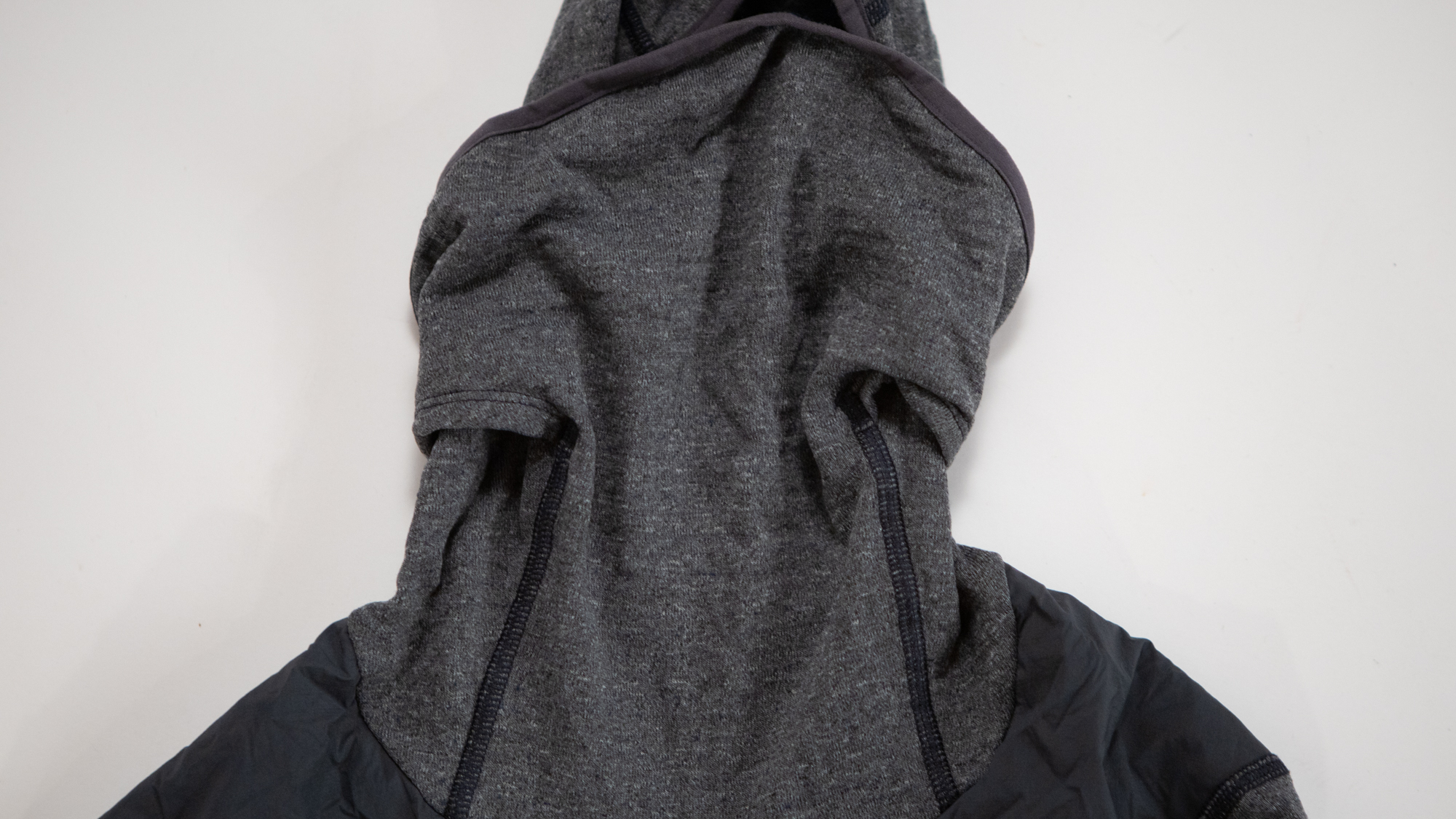
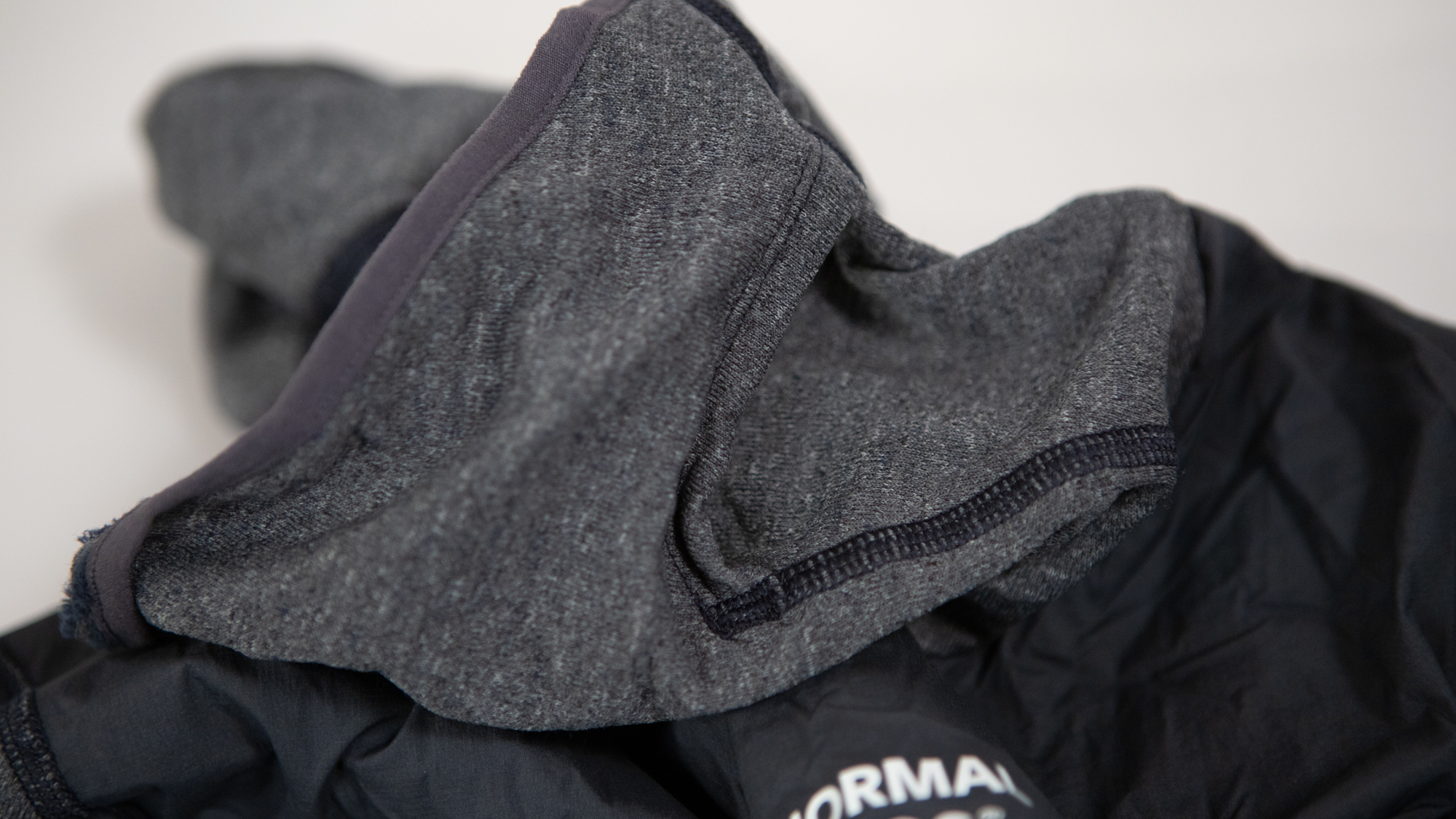
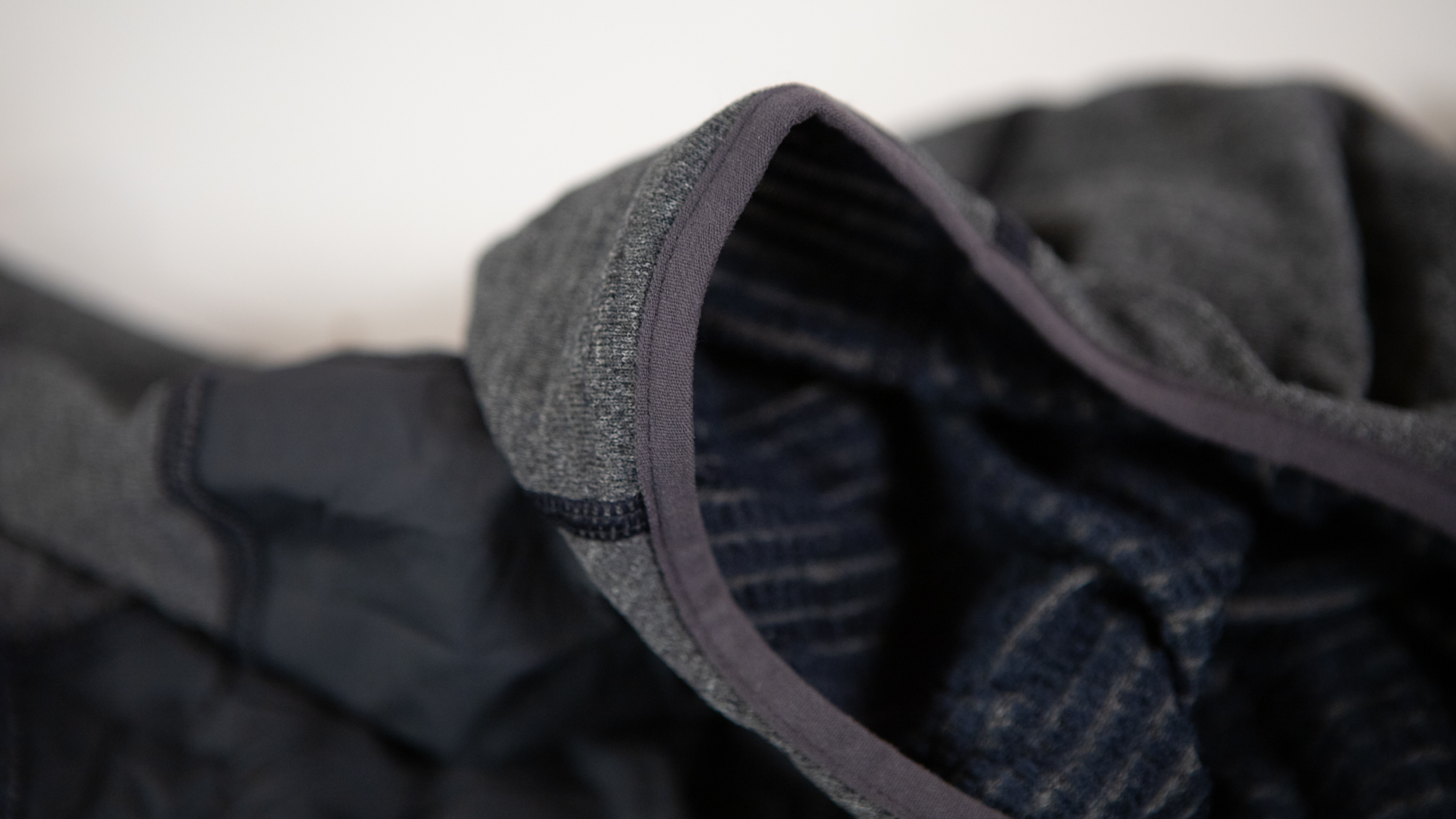
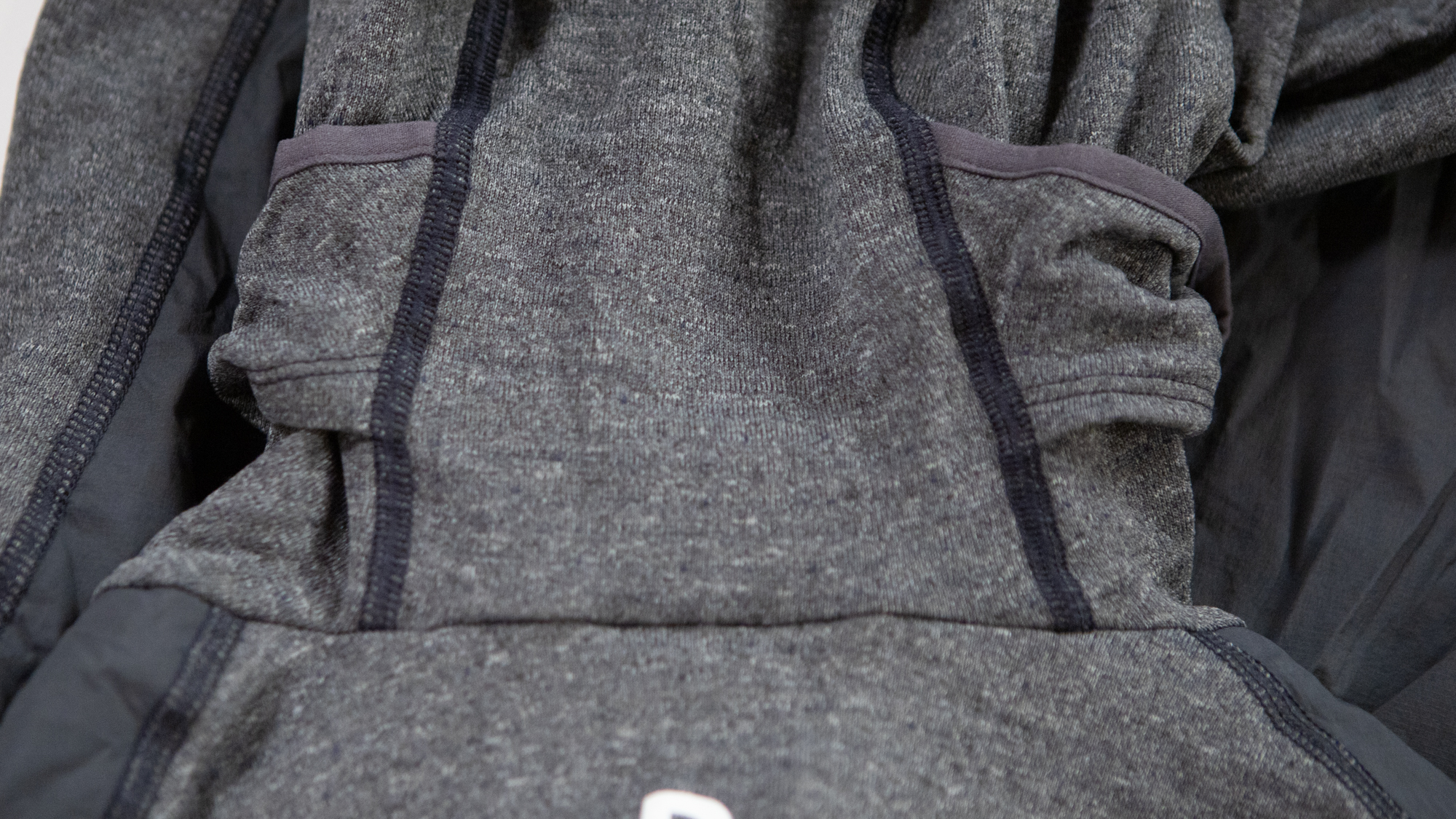
As the day went on this thermal base layer from PAS continued to adapt. Merino is naturally temperature regulating anyway so small changes actually go unnoticed. You can pull up the face covering, or add gloves, and that will bring up your core temp quite a bit. Late in the day when the rain got harder and the temperatures dropped, this piece really started to shine.
Remember, it's not that heavy. The temperature only got down to 7 degrees C (45 degrees F) but, again, that just means it's flexible. It got cold enough to pull up the hood for a few hours. I didn't overheat but I was remarkably warm. Less energy needed for my core meant my hands stopped hurting and at times when I descended, I pulled up the face covering.
In those moments when the face covering was up, the small detail of the helmet pass through is immediately noticeable. Of course, it does mean you'll need to stop to get it in place but it also means when you pull up the face covering it will stay put. When you've got helmet straps that go under the face covering, they tend to work it down over time. The pass through makes sure if you want it up, it will stay up. Even with the hood in place and your helmet straps though the pass throughs on the side, you can still tug down the face covering. It stays where you want it but it’s flexible and adaptable.
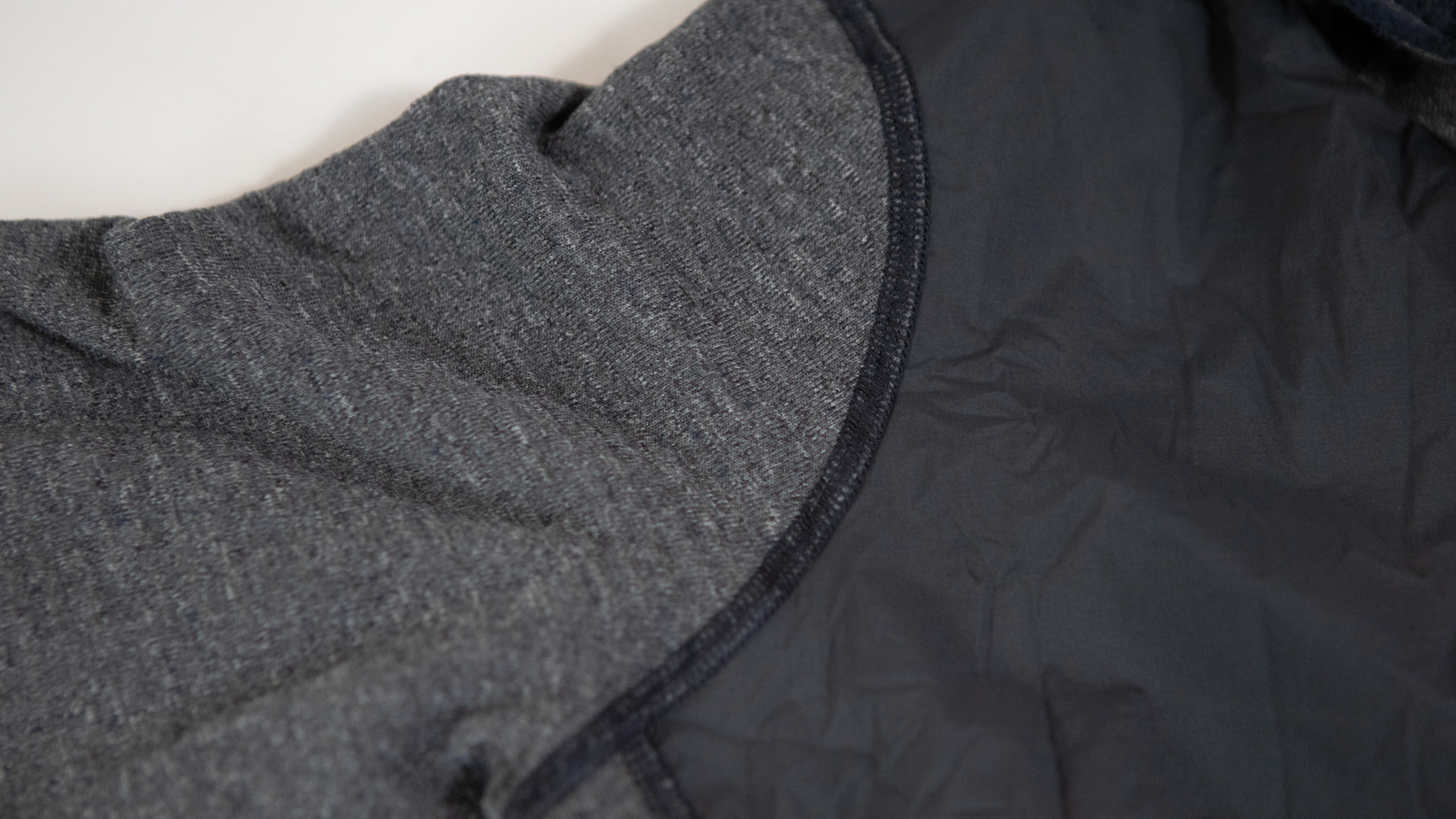
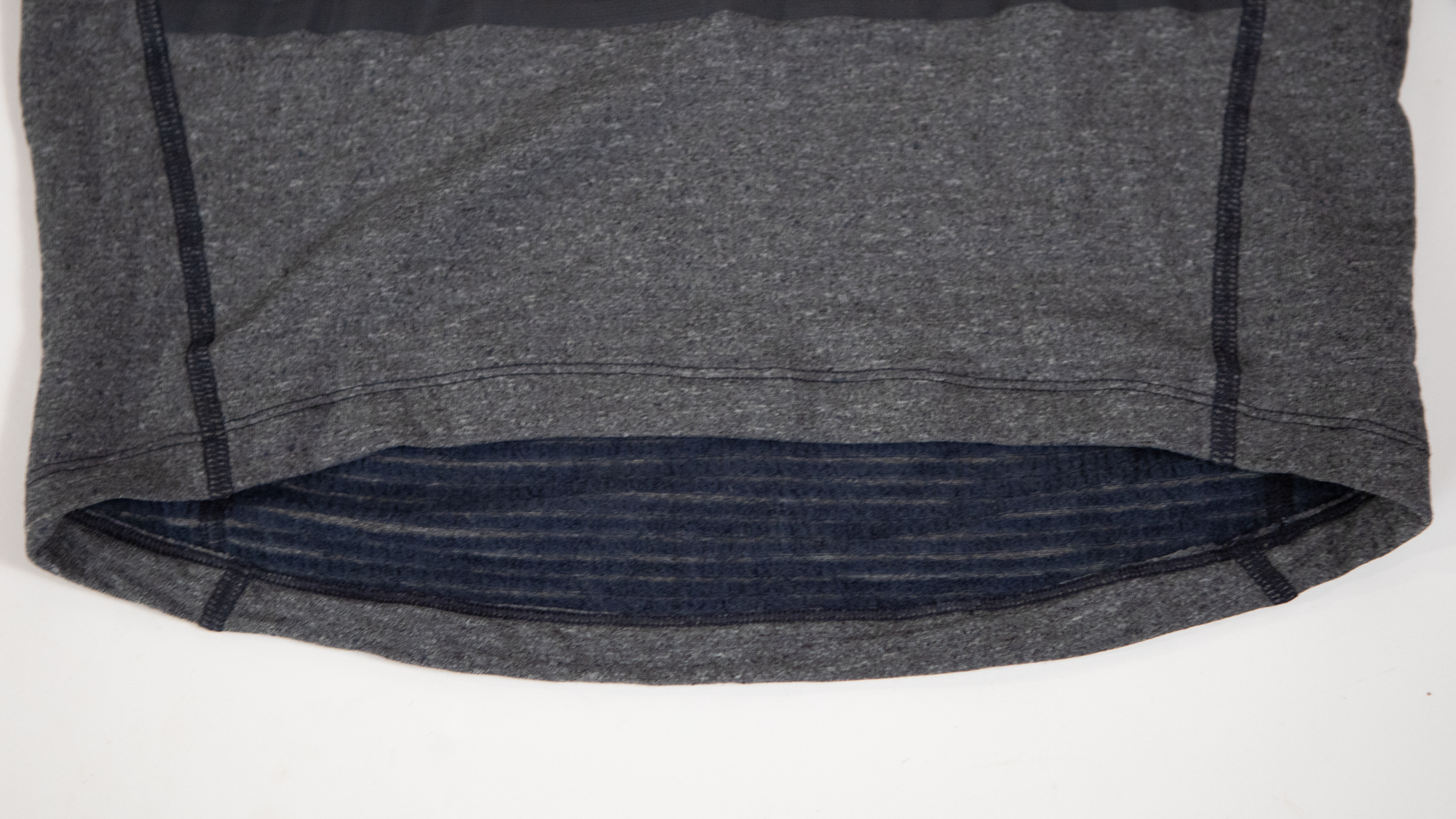
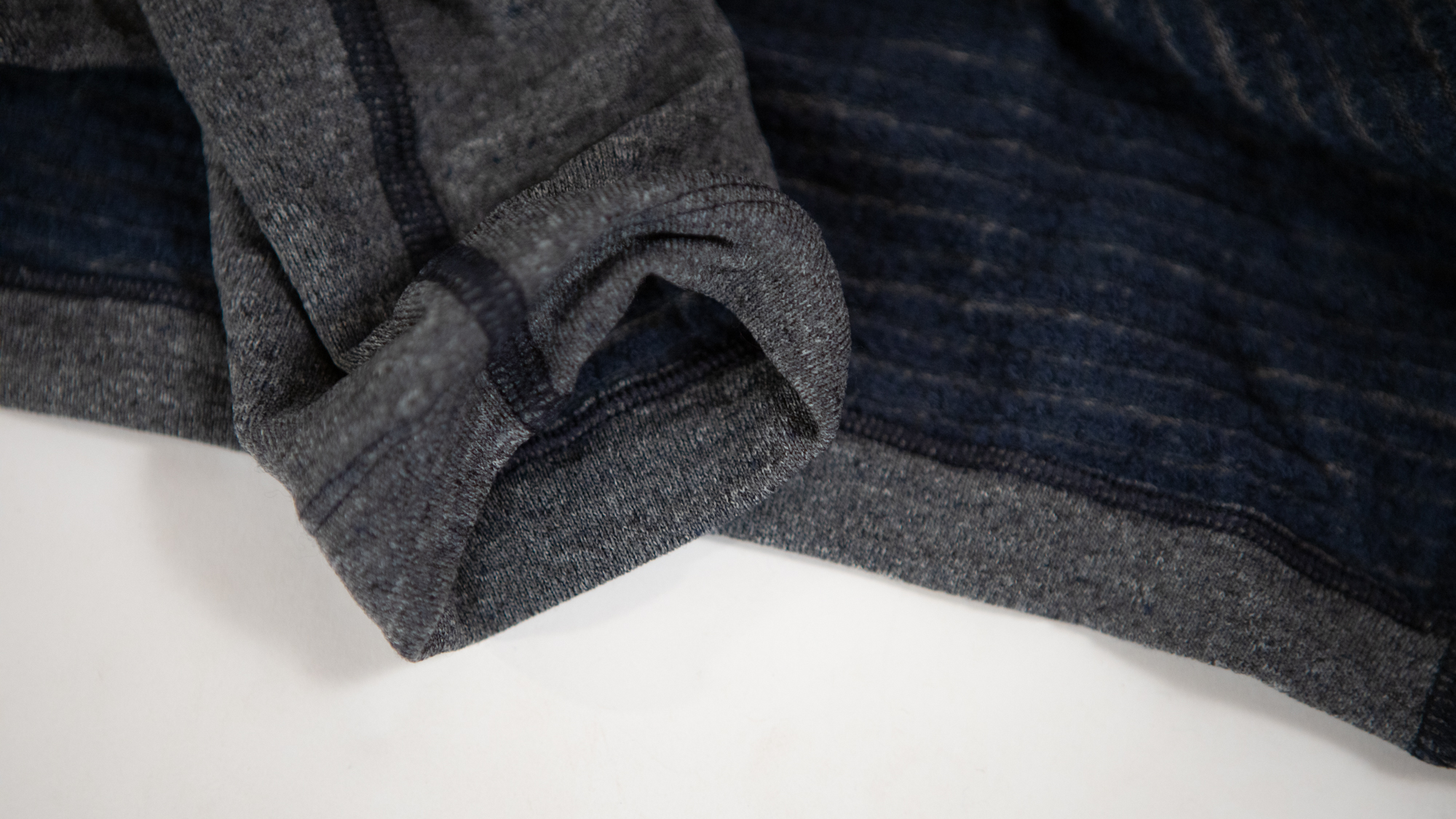
Verdict
The theme of flexibility is what all the details add up to. Except, there is one detail that breaks the mould. That windstopper front makes the whole piece less flexible. To be fair, it proved to be workable but I’d still prefer to see the PAS Normal Studios Thermal Long Sleeve Windproof Base Layer go without. Given the warmth, it’s something that will tend to go under another layer that already takes care of the wind. It would make it easier to cool off without that detail.
Otherwise, it’s the details that make this piece from PAS Normal. One place to start listing those small wins is with the tailoring. It's basic but not every company follows industry norms and PAS Normal does. Beyond that basic starting point, the front is slightly shorter so it sits flat and the rear is just a bit longer so it doesn't ride up. The arm length is perfect and there is no binding at the shoulders. Then there's the hood.
The hood is brilliant because someone took the time to think about the pain points that occur when using a hood and a helmet. The pass through for the straps makes sure it stays in place when you want it to. Then, when it's a bit warmer, you've just got a great neck warmer.
All these details also happen to come together at a lower price than you might expect. Assos and Rapha both have competing products and they are both more expensive. You might not consider PAS Normal a bargain but there's no denying the price comparison. Overall, there are warmer options out there but if you need to ride in cold weather this piece from PAS Normal is a solid choice for layering.
| Design and aesthetics | Seemingly simple but the details have been well thought through. | 10/10 |
| Thermal management | Power Wool does a great job regulating across a wide range of conditions as does the option to fold the hood up or down. Adding windstop is a mistake though. | 8/10 |
| Next to skin feel | Power Wool seems to work well for regulation but it does feel like wool next to your skin. It’s not bad but I do have other options I prefer. | 8/10 |
| Comfort and fit | Perfect sizing and fitted without a constrictive feeling. | 10/10 |
| Value | Better than Assos and Rapha but there are better values out there. | 8/10 |
| Overall | Row 5 - Cell 1 | 88% |
Tech Specs: PAS Normal Studios Thermal Long Sleeve Windproof Base Layer
- Price: £125 / $155 / €140
- Weight: 194g (As measured size small)
- Size availability: XXS-XXL
- Colour Options: Navy, Olive
- Materials: 54% Polyester, 38% Wool, 8% Spandex
Josh hails from the Pacific Northwest of the United States but would prefer riding through the desert than the rain. He will happily talk for hours about the minutiae of cycling tech but also has an understanding that most people just want things to work. He is a road cyclist at heart and doesn't care much if those roads are paved, dirt, or digital. Although he rarely races, if you ask him to ride from sunrise to sunset the answer will be yes. Height: 5'9" Weight: 140 lb. Rides: Salsa Warbird, Cannondale CAAD9, Enve Melee, Look 795 Blade RS, Priority Continuum Onyx
